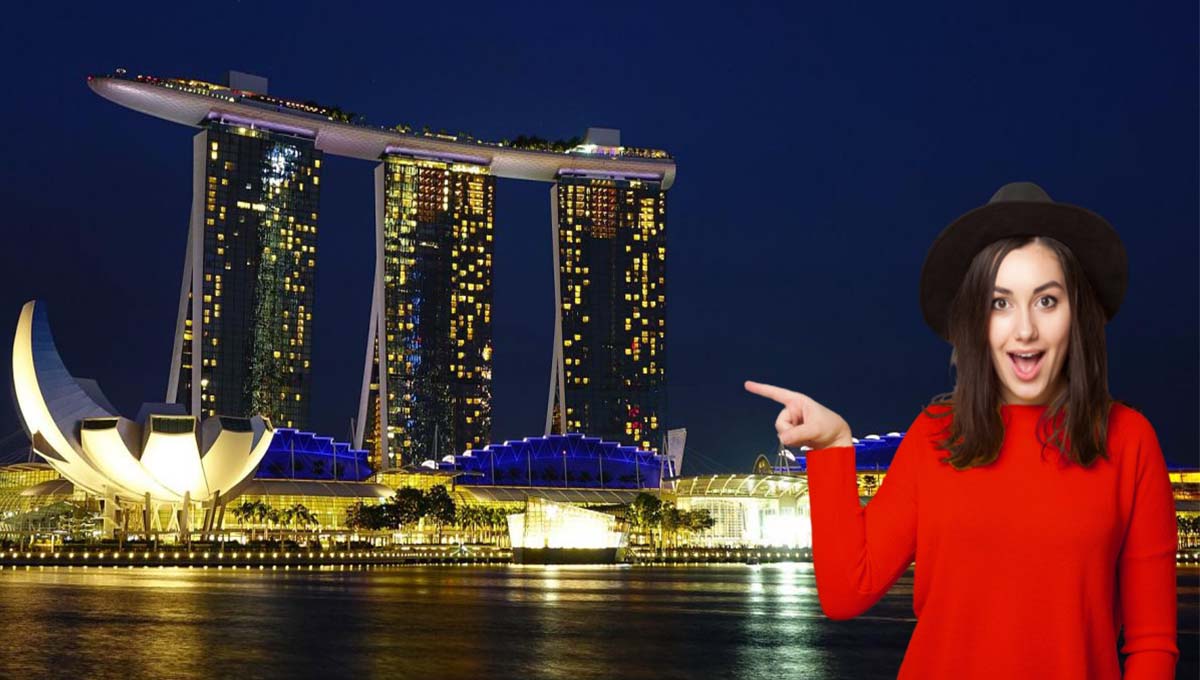Exactly 40 years after its independence in 1965, Singapore dropped a bombshell. They will be lifting up the ban on casinos. This shocking news surprised the entire South East Asia. That’s because Singapore has a rep as a nanny state.
Hence, this news has raised many eyebrows. It drove many analysts into a frenzy, trying to figure out the logic behind uplifting the ban.










Not only that, the news came along with the approval of 2 casino projects. One in Sentosa Island by the Genting Group. Another in the Marina Bay by Las Vegas Sands Corp. Fortunately, both are stalwarts in the gaming market.
This article “Why did Singapore allow casinos?” will discuss the reason why Singapore finally lifted the ban on casinos. Plus, what impact it’ll bring to the country and what you can expect if you visit there.

Why Singapore Finally Lifted The Ban On Casinos?
According to the government, the move was made in an attempt to mix and boost tourism. It is one of the means to strengthen its position as an international tourist hub in South East Asia. Which will improve the economy of the country in the end.
Being one of the smallest countries, Singapore has very limited natural resources. So, the government has to be really adaptive. Notably in growing its economy.
That’s why the government finally overturned its previous decision. This came after thoroughly weighing the benefits and drawbacks of a casino.
They have set their eyes on growing the tourism sector. And the casinos will act as a key catalyst to achieve that.
Related Post: What Was Singapore’s 1st Casino?











The Casinos Will Not Only Attract Gamblers
From the beginning, there is a very clear vision. The casinos shall not only attract gamblers. Because gamblers alone would not justify lifting the casino ban. Thus, both casinos in Singapore were built as part of an integrated resort city.
The government had bigger plans for those casinos. They wanted to attract more tourists than gamblers. That’s where the idea of an integrated resort came about. To build other attractions surrounding the casino.
A lot of effort was poured to develop many iconic tourist attractions. All are strategically located around the casinos. This is to offer more options for tourists to visit. And spend their monies.
So, they are hoping that the spending rate from the tourists would increase. That’s the big plan to increase tourism revenue by leaps and bounds.

The Impact Of Casinos On Singapore
Many are very optimistic about the positive impact of the casino projects. No doubt that the lifting of the ban will lead to a surge in casino-related tourism. But, there are also concerns that it may cause more harm than good.
So, what are the consequences of this decision?
The casinos’ impact on Singapore’s tourism
More than a decade has passed. Singapore’s tourism has been nothing but great. The casinos are in the heart of a giant integrated resort. And that has proven to attract more than gamblers.
Many visitors came to admire the casino and its surrounding attractions. Especially Marina Bay Sands. That’s because its building has become an iconic structure to the entire world now.
The unique building consists of 3 towers. They are joined together by a massive rooftop that resembles a luxurious ship. It’s a modern-day wonder.
Las Vegas Sands Corp, the owner of Marina Bay Sands, pointed out that building the resort was their most challenging project. At a total cost of S$5.5 billion, it is the second most costly casino ever built in the world.
Resort World Sentosa may not have an iconic building. But it has an extremely strategic location. Being in a heart of a resort island, it’s a perfect place for a family vacation. The adults can spend their time in the casino while the children can visit Universal Studio next to it.
The casinos’ impact on Singapore’s economy
As more and more visitors pour in to visit the casino, naturally the economy will improve.
Both projects are cleverly done as an integrated resort city. So, not only the tourism sector experienced notable growth. Analysts found that various other sectors are flourishing as well.
Firstly, the approval of 2 licensed casinos has seen a total of USD9.9 billion flowing into the country. Marina Bay Sands cost S$5.5 billion to build, while Resort World Sentosa cost S$4.4 billion to build.
Secondly, both casinos Singapore announced a further expansion in 2019. They leverage on the global lockdown due to Covid-19. This will see another S$7.8 billion pouring into Singapore’s economy.
During this period, many countries are experiencing a recession due to the pandemic. Fortunately for Singapore, the mega expansion helps to cushion the economic downturn.
The social impact of having a local casino
The Singapore government recognize the potential harm from the casinos. Having 2 of them in a tiny country, means they’re highly reachable to every citizen. Hence they have been actively working to curb problem gambling.
Firstly, they formed the Casino Regulatory Authority (CRA). This body is under the Ministry of Home Affairs. The CRA was tasked to oversee every aspect pertaining the casino in Singapore. In 2022, the CRA will be reformed into Gambling Regulatory Authority (GRA) instead.
This is a move to keep the organization up to date with modern forms of gambling and casino. As the GRA, their scope will cover everything on gambling. Hence, allowing them to respond better to emerging forms of gambling.
One of the most notable moves the government made was putting in place a casino entry levy. This levy only applies to Singaporeans and its PRs. When it was first introduced, the levy was S$100 for a day pass. While an annual pass cost S$2,000.
But in 2019, the entry levy was increased by a whopping 50%. Now it’ll cost S$150 for a day pass and S$3,000 for an annual pass.
Owing to all these policies, Singapore has curbed the effects of problem gambling.
Closing Thoughts
All in all, the lifting of the ban on casinos in Singapore has been great for the country’s economy. A well-planned casino within a resort city has truly brought about a better change. Not only to the economy but in many other sectors as well.
Coupled with good policies, the harms from problem gambling were kept at bay too.
Related Post:










